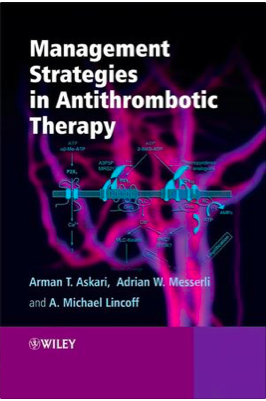It has become well-established that there is an enormous cost, both clinical and economic,
associated with intravascular thrombosis. Understanding the central role of thrombosis in
the pathogenesis of the acute coronary syndromes, ischemic complications of percutaneous
coronary intervention, and venous thromboembolic disease has facilitated the rapid expansion
of available antithrombotic therapies to treat these potentially life-threatening conditions.
Furthermore, investigation focusing on the use of fibrinolytic therapy, antiplatelet therapy
(aspirin, the thieneopyridines, glycoprotein IIb/IIIa inhibitors) and antithrombin therapy
(unfractionated heparin, low-molecular-weight heparins, direct thrombin inhibitors) as well
as novel combinations of these agents has resulted in a marked improvement in outcomes for
patients stricken with a thrombotic event. Despite the improvement in outcomes, the burden
of thrombosis remains, as does the search for improved antithrombotic therapies.
Download here: Management Strategies in Antithrombotic Therapy
Sign up here with your email

ConversionConversion EmoticonEmoticon